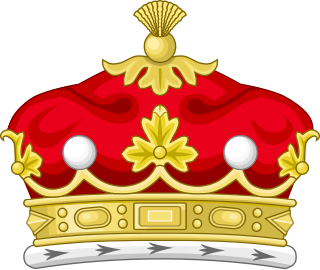 W
WMarquess of Linlithgow, in the County of Linlithgow or West Lothian, is a title in the Peerage of the United Kingdom. It was created on 23 October 1902 for John Hope, 7th Earl of Hopetoun. The current holder of the title is Adrian Hope.
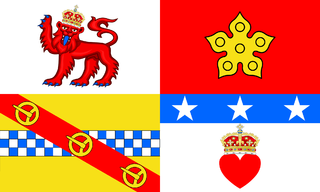 W
WThe Mormaer or Earl of Angus was the ruler of the medieval Scottish province of Angus. The title, in the Peerage of Scotland, is held by the Duke of Hamilton, and is used as a courtesy title for the eldest son of the Duke's eldest son.
 W
WDuke of Atholl, alternatively Duke of Athole, named after Atholl in Scotland, is a title in the Peerage of Scotland held by the head of Clan Murray. It was created by Queen Anne in 1703 for John Murray, 2nd Marquess of Atholl, with a special remainder to the heir male of his father, the 1st Marquess.
 W
WDuke of Atholl, alternatively Duke of Athole, named after Atholl in Scotland, is a title in the Peerage of Scotland held by the head of Clan Murray. It was created by Queen Anne in 1703 for John Murray, 2nd Marquess of Atholl, with a special remainder to the heir male of his father, the 1st Marquess.
 W
WDuke of Buckingham and Normanby was a title in the Peerage of England. The full title was Duke of the County of Buckingham and of Normanby but in practice only Duke of Buckingham and Normanby was used. The dukedom was created in 1703 for John Sheffield, 1st Marquess of Normanby KG, a notable Tory politician of the late Stuart period, who served under Queen Anne as Lord Privy Seal and Lord President of the Council. He had succeeded his father as 3rd Earl of Mulgrave in 1658 and been made Marquess of Normanby in 1694.
 W
WMarquess of the County of Bute, shortened in general usage to Marquess of Bute, is a title in the Peerage of Great Britain. It was created in 1796 for John Stuart, 4th Earl of Bute.
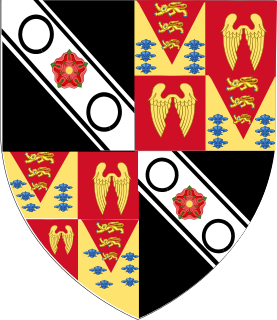 W
WThe titles of Earl of Hertford and Marquess of Hertford have been created several times in the peerages of England and Great Britain.
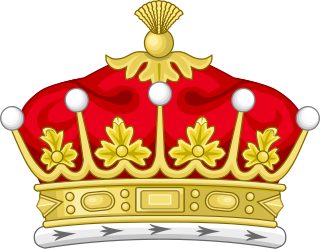 W
WEarl of Cromartie is a title that has been created twice, both for members of the Mackenzie family. It was first created as Earl of Cromarty in the Peerage of Scotland in 1703 for Sir George Mackenzie, 2nd Baronet, but his titles were forfeited after the Jacobite rising of 1745. It was recreated in 1861 in the Peerage of the United Kingdom for Anne Sutherland-Leveson-Gower, Duchess of Sutherland. Since 1979, the Earl of Cromartie has been chief of Clan Mackenzie.
 W
WEarl of Stair is a title in the Peerage of Scotland. It was created in 1703 for the lawyer and statesman John Dalrymple, 2nd Viscount of Stair.
 W
WViscount Doneraile is a title that has been created twice in the Peerage of Ireland, both times for members of the St Leger family.
 W
WThe Mormaer or Earl of Angus was the ruler of the medieval Scottish province of Angus. The title, in the Peerage of Scotland, is held by the Duke of Hamilton, and is used as a courtesy title for the eldest son of the Duke's eldest son.
 W
WThe Mormaer or Earl of Angus was the ruler of the medieval Scottish province of Angus. The title, in the Peerage of Scotland, is held by the Duke of Hamilton, and is used as a courtesy title for the eldest son of the Duke's eldest son.
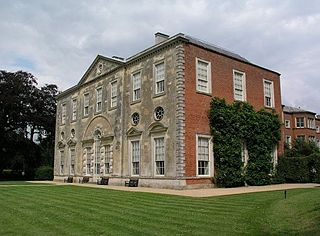 W
WEarl Verney, in the Province of Leinster, was a title in the Peerage of Ireland. Sir Ralph Verney sat as a Member of Parliament for Aylesbury, for Great Bedwyn and for Buckingham. In 1661 he was created a Baronet, of Middle Claydon in the County of Buckingham, in the Baronetage of England. His son Sir John Verney, Bt, was a Member of Parliament for Buckinghamshire and for Amersham. In 1703, he was raised to the Peerage of Ireland as Baron Verney of Belturbet, in the County of Cavan, and Viscount Fermanagh. His son, the second Viscount, represented Amersham and Wendover in Parliament. In 1742 he was created Earl Verney, in the Province of Leinster, in the Peerage of Ireland. However, all titles became extinct on the death of his son, the second Earl, in 1791.
 W
WEarl of Lindsay is a title in the Peerage of Scotland. It was created in 1633 for John Lindsay, 10th Lord Lindsay, who later inherited the ancient Earldom of Crawford. The two earldoms remained united until the death of the 22nd Earl of Crawford, also sixth Earl of Lindsay, in 1808. Then the earldom of Lindsay passed to David Lindsay, while the earldom of Crawford became dormant because no-one could prove a claim to the title until 1848. Both David, 7th Earl of Lindsay, and his successor Patrick, 8th Earl of Lindsay, died without sons, and the disputed claim over the earldom was resolved by the House of Lords in 1878 in favour of Sir John Trotter Bethune, 2nd Baronet.
 W
WEarl of Glasgow is a title in the Peerage of Scotland. It was created in 1703 for David Boyle, Lord Boyle.
 W
WDuke of Sutherland is a title in the Peerage of the United Kingdom which was created by William IV in 1833 for George Leveson-Gower, 2nd Marquess of Stafford. A series of marriages to heiresses by members of the Leveson-Gower family made the Dukes of Sutherland one of the richest landowning families in the United Kingdom. The title remained in the Leveson-Gower family until the death of the 5th Duke of Sutherland in 1963, when it passed to the 5th Earl of Ellesmere from the Egerton family.
 W
WDuke of Rutland is a title in the Peerage of England, named for Rutland, a county in the East Midlands of England. Earldoms named after Rutland have been created three times; the ninth earl of the third creation was made duke in 1703, in whose family's line the title continues. The heir apparent to the dukedom has the privilege of using the courtesy style/title of the Marquis/Marquess of Granby.
 W
WEarl of Aylesford, in the County of Kent, is a title in the Peerage of Great Britain. It was created in 1714 for the lawyer and politician Heneage Finch, 1st Baron Guernsey. He had already been created Baron Guernsey in the Peerage of England in 1703. Finch was the younger son of Heneage Finch, 1st Earl of Nottingham and the great-grandson of Elizabeth Heneage, 1st Countess of Winchilsea. Lord Aylesford's eldest son, the second Earl, represented Maidstone and Surrey in Parliament. In 1712, he married Mary Fisher, daughter of Sir Clement Fisher, 3rd Baronet. Through this marriage Packington Hall in Warwickshire came into the Finch family. Their son, the third Earl, sat as a Member of Parliament for Leicestershire and Maidstone. His eldest son, the fourth Earl, represented Castle Rising and Maidstone in the House of Commons, and after entering the House of Lords on his father's death, served as Captain of the Yeomen of the Guard from 1783 to 1804 and as Lord Steward of the Household from 1804 to 1812.
 W
WMarquess of Bristol is a title in the Peerage of the United Kingdom held by the Hervey family since 1826. The Marquess's subsidiary titles are: Earl of Bristol, Earl Jermyn, of Horningsheath in the County of Suffolk (1826), and Baron Hervey, of Ickworth in the County of Suffolk (1703). The Barony of Hervey is in the Peerage of England, the Earldom of Bristol in the Peerage of Great Britain and the Earldom of Jermyn in the Peerage of the United Kingdom. Earl Jermyn is used as courtesy title by the Marquess's eldest son and heir. The Marquess of Bristol also holds the office of Hereditary High Steward of the Liberty of St. Edmund. The present holder of these titles is Frederick Hervey, the 8th Marquess and 12th Earl of Bristol.
 W
WMarquess of Linlithgow, in the County of Linlithgow or West Lothian, is a title in the Peerage of the United Kingdom. It was created on 23 October 1902 for John Hope, 7th Earl of Hopetoun. The current holder of the title is Adrian Hope.
 W
WEarl of Rosebery is a title in the Peerage of Scotland created in 1703 for Archibald Primrose, 1st Viscount of Rosebery, with remainder to his issue male and female successively. Its name comes from Roseberry Topping, a hill near Archibald's wife's estates in Yorkshire. The current earl is Neil Primrose, 7th Earl of Rosebery.
 W
WThe Mormaer or Earl of Angus was the ruler of the medieval Scottish province of Angus. The title, in the Peerage of Scotland, is held by the Duke of Hamilton, and is used as a courtesy title for the eldest son of the Duke's eldest son.
 W
WEarl of Glasgow is a title in the Peerage of Scotland. It was created in 1703 for David Boyle, Lord Boyle.
 W
WViscount Doneraile is a title that has been created twice in the Peerage of Ireland, both times for members of the St Leger family.
 W
WMarquess of the County of Bute, shortened in general usage to Marquess of Bute, is a title in the Peerage of Great Britain. It was created in 1796 for John Stuart, 4th Earl of Bute.
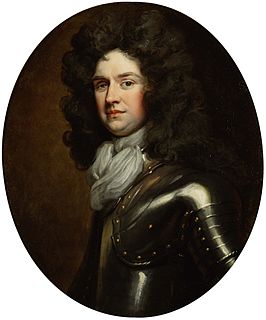 W
WEarl of Portmore was a title in the Peerage of Scotland. It was created in 1703 for the Scottish military commander David Colyear, 1st Lord Portmore. He had already been created Lord Portmore in 1699 and was made Lord Colyear and Viscount of Milsington at the same time as he was granted the earldom, also in the Peerage of Scotland. He was the son of Alexander Colyear, who had been created a Baronet, of Holland, in the Baronetage of England on 20 February 1677. Lord Portmore married Catherine Sedley, Countess of Dorchester, a former mistress of James II. He was succeeded by his only surviving son, the second Earl. He represented Wycombe and Andover in Parliament. His grandson, the fourth Earl, sat as Member of Parliament for Boston. The fourth Earl died without surviving male issue in 1835 when the titles became extinct.
 W
WMarquess of the County of Bute, shortened in general usage to Marquess of Bute, is a title in the Peerage of Great Britain. It was created in 1796 for John Stuart, 4th Earl of Bute.
 W
WEarl of Portmore was a title in the Peerage of Scotland. It was created in 1703 for the Scottish military commander David Colyear, 1st Lord Portmore. He had already been created Lord Portmore in 1699 and was made Lord Colyear and Viscount of Milsington at the same time as he was granted the earldom, also in the Peerage of Scotland. He was the son of Alexander Colyear, who had been created a Baronet, of Holland, in the Baronetage of England on 20 February 1677. Lord Portmore married Catherine Sedley, Countess of Dorchester, a former mistress of James II. He was succeeded by his only surviving son, the second Earl. He represented Wycombe and Andover in Parliament. His grandson, the fourth Earl, sat as Member of Parliament for Boston. The fourth Earl died without surviving male issue in 1835 when the titles became extinct.
 W
WEarl of Rosebery is a title in the Peerage of Scotland created in 1703 for Archibald Primrose, 1st Viscount of Rosebery, with remainder to his issue male and female successively. Its name comes from Roseberry Topping, a hill near Archibald's wife's estates in Yorkshire. The current earl is Neil Primrose, 7th Earl of Rosebery.
 W
WDuke of Rutland is a title in the Peerage of England, named for Rutland, a county in the East Midlands of England. Earldoms named after Rutland have been created three times; the ninth earl of the third creation was made duke in 1703, in whose family's line the title continues. The heir apparent to the dukedom has the privilege of using the courtesy style/title of the Marquis/Marquess of Granby.
 W
WEarl of Stair is a title in the Peerage of Scotland. It was created in 1703 for the lawyer and statesman John Dalrymple, 2nd Viscount of Stair.
 W
WDuke of Atholl, alternatively Duke of Athole, named after Atholl in Scotland, is a title in the Peerage of Scotland held by the head of Clan Murray. It was created by Queen Anne in 1703 for John Murray, 2nd Marquess of Atholl, with a special remainder to the heir male of his father, the 1st Marquess.
 W
WEarl of Cromartie is a title that has been created twice, both for members of the Mackenzie family. It was first created as Earl of Cromarty in the Peerage of Scotland in 1703 for Sir George Mackenzie, 2nd Baronet, but his titles were forfeited after the Jacobite rising of 1745. It was recreated in 1861 in the Peerage of the United Kingdom for Anne Sutherland-Leveson-Gower, Duchess of Sutherland. Since 1979, the Earl of Cromartie has been chief of Clan Mackenzie.
 W
WDuke of Atholl, alternatively Duke of Athole, named after Atholl in Scotland, is a title in the Peerage of Scotland held by the head of Clan Murray. It was created by Queen Anne in 1703 for John Murray, 2nd Marquess of Atholl, with a special remainder to the heir male of his father, the 1st Marquess.
 W
WEarl Verney, in the Province of Leinster, was a title in the Peerage of Ireland. Sir Ralph Verney sat as a Member of Parliament for Aylesbury, for Great Bedwyn and for Buckingham. In 1661 he was created a Baronet, of Middle Claydon in the County of Buckingham, in the Baronetage of England. His son Sir John Verney, Bt, was a Member of Parliament for Buckinghamshire and for Amersham. In 1703, he was raised to the Peerage of Ireland as Baron Verney of Belturbet, in the County of Cavan, and Viscount Fermanagh. His son, the second Viscount, represented Amersham and Wendover in Parliament. In 1742 he was created Earl Verney, in the Province of Leinster, in the Peerage of Ireland. However, all titles became extinct on the death of his son, the second Earl, in 1791.